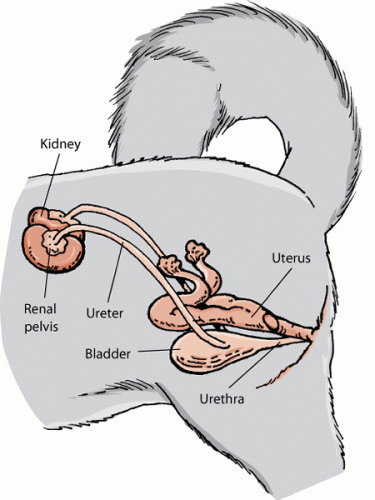Lower Urinary Tract Problems and Infections in Dogs:
https://pets.webmd.com/dogs/guide/lower-urinary-tract-problems-infections-dogs#2
There are many problems that can affect a dog’s lower urinary system. Incontinence, bladder stones or crystals in the urine, bacterial infections, cancer, trauma or even obstruction of the urethra, the tube that allows urine to pass from the bladder to the outside of the body, can occur.
What Causes Lower Urinary Tract Problems in Dogs:
Stones, crystals or debris accumulation in the bladder or urethra
Bladder inflammation or infection
Incontinence from excessive water drinking or weak bladder/hormonal issue
Trauma
Cancer
Stress
Spinal cord abnormalities
Congenital abnormality
Prostate disease
What Health Conditions Might Lead to Lower Urinary Tract Problems:
The most common lower urinary tract disease in dogs over seven years of age is incontinence related to a weak urinary sphincter muscle, allowing urine to “leak” out. Bacterial infections are also common. Endocrine diseases such as adrenal disease and diabetes mellitus can predispose dogs to bacterial infection of the lower urinary tract.
Which Dogs Are Prone to Lower Urinary Tract Problems:
Older female dogs and dogs with diabetes are especially prone to urinary tract problems. There are different types of bladder stones that have a tendency to form under different conditions-some in older dogs, some in either males or females, and some in specific breeds under certain circumstances.
How Can I Tell if My Dog Has Urinary Tract Problems:
The following signs may indicate that your dog is having trouble with his urinary tract:
– Inability to urinate or only passing a small amount of urine
– Bloody or cloudy urine
– Fever
– Loss of bladder control, dribbling urine
– Increased amount and/or frequency of urination
– Straining and/or crying out in pain when trying to pass urine
– Soiling in inappropriate places
– Constant licking of urinary opening
– Strong odor to the urine
– Lethargy
– Vomiting
– Changes in appetite
– Weight loss
– Severe back pain
– Increased water consumption
What Should I Do If I Think My Dog Has Lower Urinary Tract Problems:
Please see your veterinarian for immediate medical attention, especially if your dog is straining to urinate or crying out in pain. This could be a medical emergency!
How Are Lower Urinary Tract Problems Diagnosed:
A veterinary visit for lower urinary tract issues will start with a physical examination and usually will include examination of the kidneys and bladder, a urinalysis and possibly urine culture, blood work, radiographs or ultrasound.
How Are Lower Urinary Tract Problems Treated:
Because canine urinary problems are so varied and potentially serious in nature, your first step is to get immediate veterinary care for your pet. Depending on your dog’s diagnosis, one of the following may be recommended:
– Antibiotics
– Medications or supplements
– Dietary changes
– Increase in water intake
– Urinary acidifiers or alkalinizers
– Intravenous or subcutaneous fluid therapy
– Surgery or other procedures to remove bladder stones or tumor
– Surgery to correct congenital abnormality
– Treatment of underlying condition that is contributing to urinary problem (e.g. diabetes mellitus)
What Can Happen If a Dog’s Lower Urinary Tract Problems Go Untreated:
Untreated lower urinary problems can lead to serious medical problems in addition to causing discomfort for your pet. Bladder infections can move to the kidneys and cause life-threatening infections. Stones can cause partial or complete obstruction of the urethra, preventing a dog from urinating. This medical emergency can lead to kidney failure and/or rupture of the bladder, and can prove fatal if the obstruction is not relieved right away.


